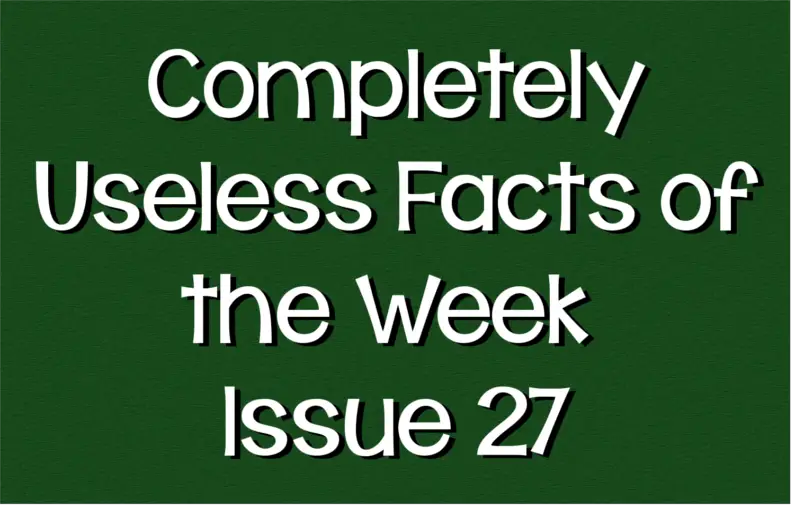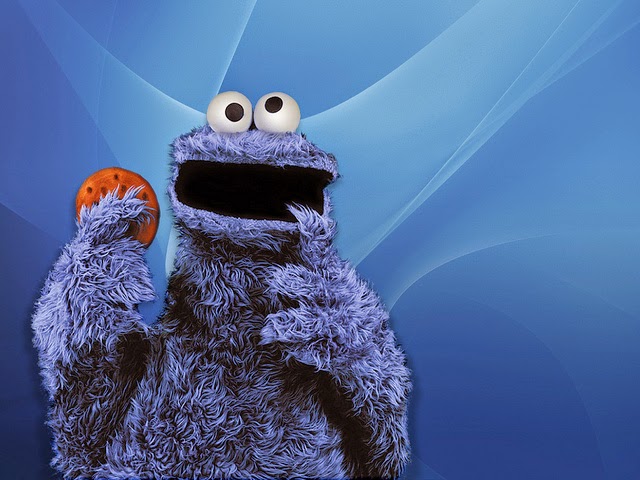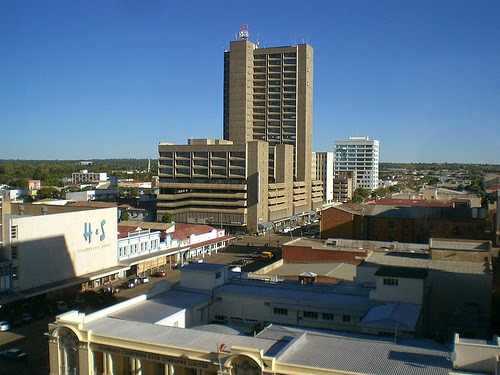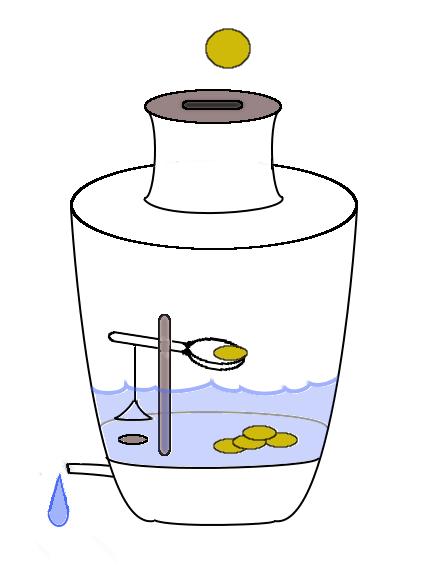 The weekly collection of useless and fun facts. In this week’s edition: Tornadoes, Vitamins, Flushing Toilets, The First Vending Machine, and Nigerian Sesame Street.
The weekly collection of useless and fun facts. In this week’s edition: Tornadoes, Vitamins, Flushing Toilets, The First Vending Machine, and Nigerian Sesame Street.
 |
| Justin1569/Wikimedia |
There is a weather phenomenon that occurs in the United States more than anywhere else on earth. The U.S. experiences about 75% of the world’s tornadoes. A tornado, of course, is a rotating column of air that moves very fast. It occurs because of a difference in pressure. At the center of a tornado is very low pressure, and at its edge is high pressure. This pressure difference between the two gives it its incredible speed. A tornado that doesn’t reach the ground is called a funnel cloud, and a tornado that develops over water is called a waterspout.
A tornado’s intensity and strength is measured after it has done its damage. This is determined using the Enhanced Fujita Scale (EF). There are six categories to the EF Scale. EF0 has wind speeds up to 85 mph, while the strongest, EF5, has wind speeds at over 200 mph. In addition, there are three types of tornadoes-weak, strong, and violent-based on the damage it has caused and how long it lasts. Weak tornadoes are usually less than ten minutes and would be an EF0 or EF1. The majority of tornadoes are in this category. Strong tornadoes go 20 minutes or longer and are usually in the EF3 category. Violent tornadoes are the most deadly and have wind speeds greater than 205 mph and can last over an hour. They’re in the EF4 and EF5 categories. Most of the tornadoes that occur in the U.S. happen in the central part of the country, affectionately known as Tornado Alley. Source
 |
| Ragesoss/Wikimedia |
The complex of micronutrients called vitamins originated from the term “vitamine” which stood for “vital amines” that are good for your body. It was coined by a biochemist named Casimir Funk in 1911 and came from his work trying to isolate the component of rice polishings, the husk of brown rice that is removed to become white rice. It was later discovered that some vitamins don’t have an amine component. It was then shortened to “vitamin”.
The research on rice polishings, or more simply, rice husks, is what essentially led to the discovery of vitamins. A Dutch military physician named Christiaan Eijkman was the first to see that there was a connection between brown and white rice in the 1890’s, and that some component was removed when it was converted from brown rice to white rice. Adolphe Vorderman continued Eijkman’s work in 1895 before being taken over by Gerrit Grijns, another Dutch doctor, in 1896. Grijns actually developed the concept that there was some type of compound that was lost during the milling of rice that couldn’t be replaced by other means. He had come up with the idea of the vitamin, but since his work had only been done in Dutch it didn’t catch on for 25 years. After that time, many other scientists furthered the study of vitamins and their relation to disease. Even though Funk is credited with the term, it was scientists building on each others work that led to this discovery. And to think it all started with a humble piece of rice. Source
A rather strange event took place in Africa, and it all had to do with clearing out sewage lines. In 2012, over 1 million residents in the Zimbabwe city of Bulawayo were asked to flush their toilets exactly at 7:30 PM on a Saturday to unblock and clear out the sewer system of the city. Why did they need to do this? Years of drought and poor maintenance on the city’s sewers often caused the city to go without running water for days and had also caused some of the sewage pipes to burst. The synchronized flush was designed to keep the pipes wet and keep them from clogging up. The city was so serious about the big flush that they even warned people that they would receive a fine if they didn’t flush at the appropriated time. The flush was believed to be a success and was even extended to twice a week at the same time. How’s that for being regular. Source
The world’s first vending machine dispensed holy water in the first century A.D. It was the work of Hero of Alexandria, an engineer and mathematician. When a person inserted a coin in the machine in a slot at the top, it hit a metal lever. This would open a plug attached from a line on the other end of the lever due to the weight of the coin. A certain amount of holy water was then dispensed. When the coin dropped off, a counterweight caused the plug to be reinserted and the flow stopped. Simple and effective. Why the need for a holy water dispensing machine? According to John Humphrey, a Greek and Roman studies professor at the University of Calgary from an article in Smithsonian Magazine, the machine was made “because people were taking more Holy Water than they were paying for.” Source
 |
| Michelle O’Connell/flickr |
The last facts are in the useful variety. The Nigerian version of the U.S. show Sesame Street started in 2011 and was called Sesame Square. Much of the show is similar to its counterpart in the U.S., but there are some unique differences that set it apart and adapted it to its new home. One of those differences is with the blue monster that likes cookies in the U.S. In the Nigerian version, the cookie monster is known as Zobi, and Zobi has a hankering for yams instead of cookies. He is also tasked with teaching kids about malaria prevention, because in Nigeria, 300,000 people die from the disease each year.
The set of Sesame Square takes place in a Nigerian village surrounded by a mango tree, and the show educates children about the dress and traditions of Nigeria. The other big difference is the lead puppet called Kami, who is five-years old and is HIV positive. The shows creators wanted to reduce the stigma of AIDS since hundreds of thousands of children have been orphaned by the disease, and they wanted those children to be able to relate to the character. The show airs on the Nigerian Television Authority, the country’s national network. Source
Another edition of the Useless Facts of the Week is done. Check back again next week for another edition. As always, remember to annoy those around you with your new found knowledge.
Past Issues of the Completely Random Facts of the Week
The condensed version of this week’s issue is below.







